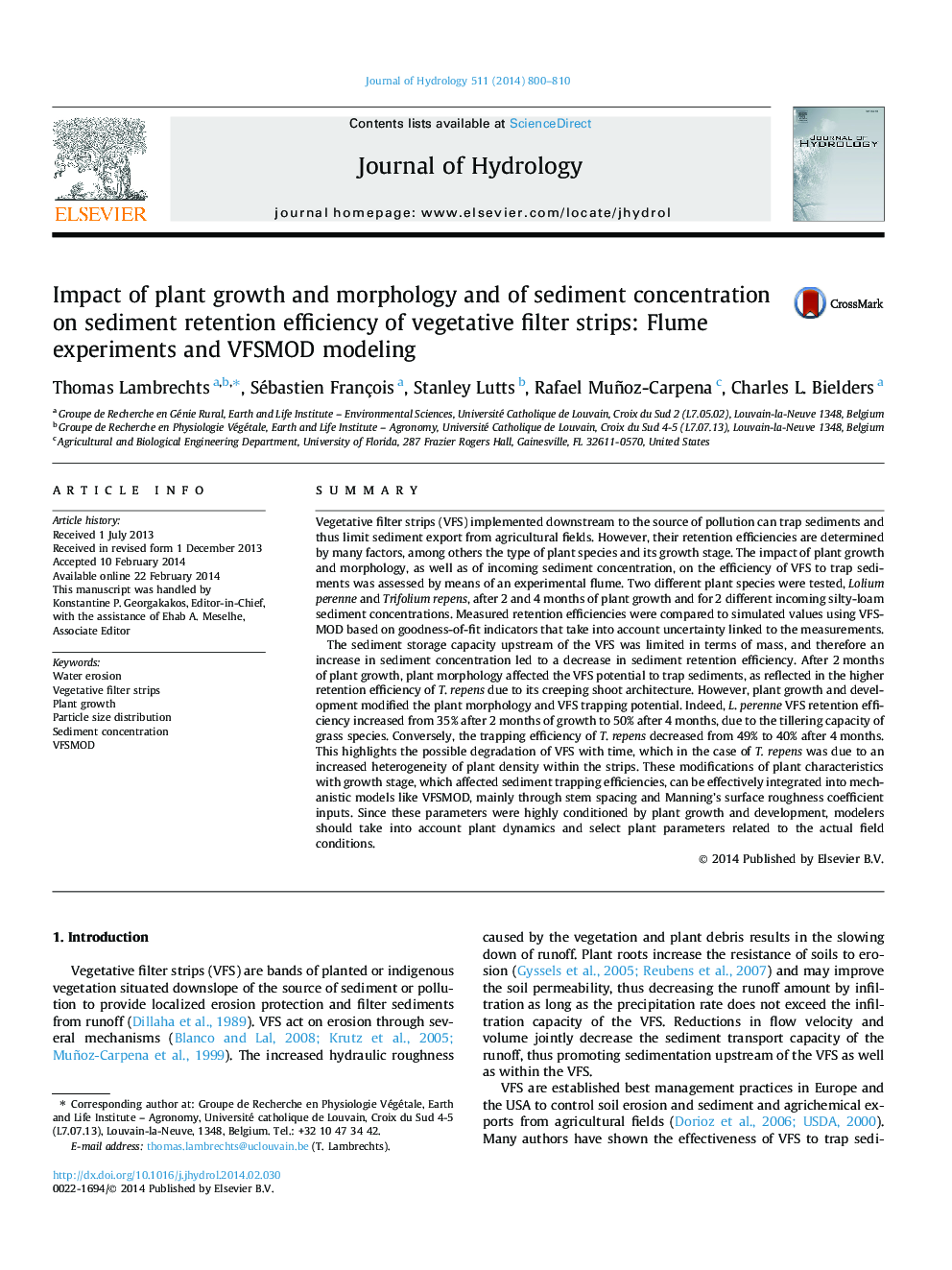| کد مقاله | کد نشریه | سال انتشار | مقاله انگلیسی | نسخه تمام متن |
|---|---|---|---|---|
| 6413359 | 1629937 | 2014 | 11 صفحه PDF | دانلود رایگان |

- Plant shoot architecture affected the sediment trapping potential of VFS.
- Tillering of Lolium perenne with growth led to drastic increase in sediment trapping.
- Plant dynamics can be handled effectively by VFSMOD.
- Silty-clay sediment trapping capacity upstream to the VFS was limited.
SummaryVegetative filter strips (VFS) implemented downstream to the source of pollution can trap sediments and thus limit sediment export from agricultural fields. However, their retention efficiencies are determined by many factors, among others the type of plant species and its growth stage. The impact of plant growth and morphology, as well as of incoming sediment concentration, on the efficiency of VFS to trap sediments was assessed by means of an experimental flume. Two different plant species were tested, Lolium perenne and Trifolium repens, after 2 and 4Â months of plant growth and for 2 different incoming silty-loam sediment concentrations. Measured retention efficiencies were compared to simulated values using VFSMOD based on goodness-of-fit indicators that take into account uncertainty linked to the measurements.The sediment storage capacity upstream of the VFS was limited in terms of mass, and therefore an increase in sediment concentration led to a decrease in sediment retention efficiency. After 2Â months of plant growth, plant morphology affected the VFS potential to trap sediments, as reflected in the higher retention efficiency of T. repens due to its creeping shoot architecture. However, plant growth and development modified the plant morphology and VFS trapping potential. Indeed, L. perenne VFS retention efficiency increased from 35% after 2Â months of growth to 50% after 4Â months, due to the tillering capacity of grass species. Conversely, the trapping efficiency of T. repens decreased from 49% to 40% after 4Â months. This highlights the possible degradation of VFS with time, which in the case of T. repens was due to an increased heterogeneity of plant density within the strips. These modifications of plant characteristics with growth stage, which affected sediment trapping efficiencies, can be effectively integrated into mechanistic models like VFSMOD, mainly through stem spacing and Manning's surface roughness coefficient inputs. Since these parameters were highly conditioned by plant growth and development, modelers should take into account plant dynamics and select plant parameters related to the actual field conditions.
Journal: Journal of Hydrology - Volume 511, 16 April 2014, Pages 800-810